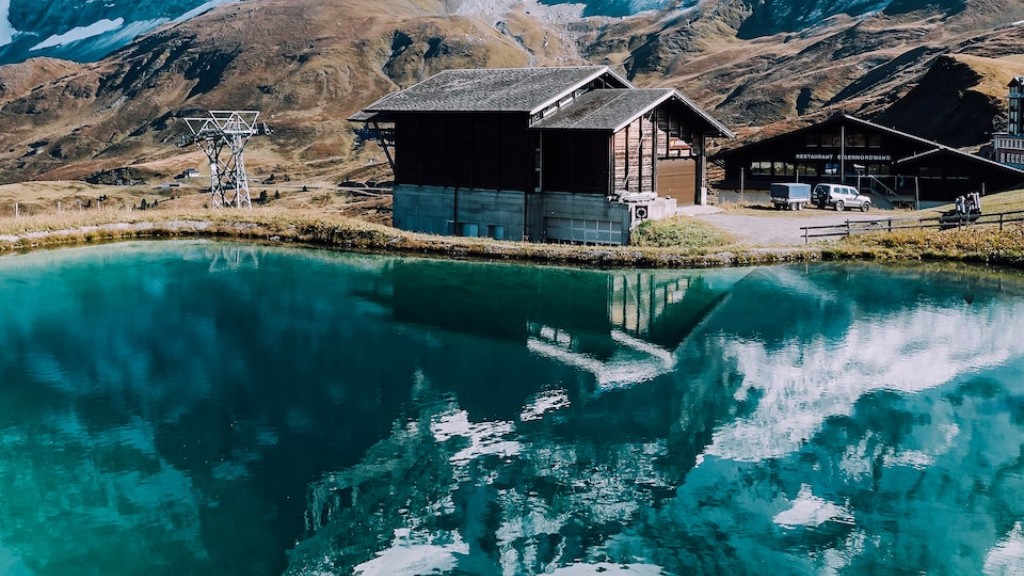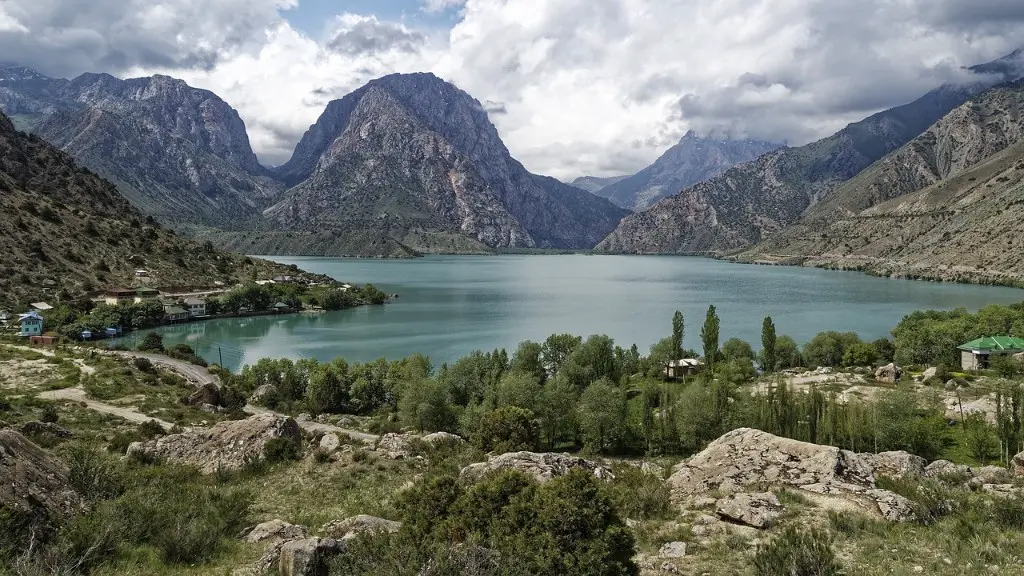Environmental Factors With Rising Lake Michigan
The rise of Lake Michigan is one of the most important environmental issues of our time. In recent years, the lake has seen an increase in water levels of 2.6 inches, according to the U.S. Geological Survey. The phenomena has been attributed to winter snowfall, an influx of surface runoff, and warmer temperatures, with the effect being that it is slowly starting to overflow and affect the area.
Climate Change and Rising Lake Michigan
A big factor behind the rise of Lake Michigan is climate change. While it is difficult to definitively say that climate change is causing the increase in water levels, it was found that the average temperatures in the Great Lakes region have risen by 2 degrees Fahrenheit, according to the National Climate Assessment. This increase in temperature has resulted in more precipitation falling on the lake’s surface, thereby causing water levels to rise.
Effects of the Rising Lake Michigan
The increased water level is having a wide-reaching effect on the region, both positive and negative. On the positive side, the increase in water levels is encouraging the growth of wildlife, like fish and birds, in the area which can help bolster local economies. On the negative side, however, the increased water levels are contributing to flooding in the region, which has led to costly construction and rehabilitation projects in the area.
Rising Lake Michigan and Its Impact on Infrastructure
The biggest effect that the rising waters of Lake Michigan have had on the area is their effect on regional infrastructure. The increase in water levels has caused waves to reach farther inland, damaging shoreline and roadways, while also contributing to the degradation of the lake’s delicate ecosystems. In addition, the lake has started to overflow in some areas, leading to coastal flooding and wetland devastation.
Rising Lake Michigan Mitigation Strategies
Given the potentially devastating impact that the increased water levels in Lake Michigan can have on the region, it is important that affected areas take measures to mitigate the potential damage. One strategy being employed is shoreline stabilization, which involves building low walls and other structures along the lake to curb the wave action and keep the lake from overflowing. This technique has been effective in some areas, however more needs to be done to ensure the safety of local infrastructure and ecosystems.
Biodiversity and Rising Lake Michigan
The rise of Lake Michigan has also had an effect on the biodiversity of the area. It has been found that the warmer temperatures and increased water levels have had a positive effect on certain species of plants and animals, leading to a wide variety of biomass in the region. This has allowed for the introduction of new species, creating a unique and diverse ecosystem.
Environmental Organizations and Rising Lake Michigan
Environmental organizations are playing a key role in finding ways to protect the lake from the impact of the rising water levels. Groups such as The Great Lakes Alliance are dedicated to protecting and enhancing the lake’s resources and health, striving to make sure that the lake is safe for future generations.
Sinkholes as a Result of Rising Lake Michigan
Rising Lake Michigan has also been linked to the appearance of sinkholes throughout the region. The increased water levels in the lake have lead to groundwater being pushed into the ground, working its way through any cracks or crevices. This has caused the ground to become unstable and eventually give way, resulting in sinkholes.
Rising Lake Michigan and Soil Erosion
The increased water levels in Lake Michigan have also led to soil erosion, affecting the environment and many of the areas surrounding the lake. This pressure has caused an influx of sediment to enter the lake’s waters, which can lead to filtration of the lake, decreased clarity, and issues with fish and wildlife. The rise in water levels has also had an effect on vegetation, making it more difficult for certain species of plants to grow in some areas.
Rising Lake Michigan and Industries
The rise in Lake Michigan’s water levels has had an effect on the industries in the area. Industries such as fishing and tourism that rely on the lake’s natural beauty and resources have become increasingly threatened as the water levels continue to rise. This will have a negative impact on the local economy, as businesses have to adapt to the changing conditions or risk going out of business.
Management of Rising Lake Michigan
Given the potential threat posed by the rising water levels in Lake Michigan, it is important that local authorities take steps to monitor and manage these effects. This is being done through a combination of watershed protection,catchment and basin management, and conservation measures to protect the lake’s resources and environment.
Global Warming and Rising Lake Michigan
Global warming has long been identified as one of the primary contributors to the increase in Lake Michigan’s water levels. The increase in average temperatures throughout the region has caused an increase in the rate at which snow melts, leading to an influx of water into the lake and increased shoreline erosion. It was also found that warmer temperatures are causing ice on the lake to break up sooner in some areas, leading to an increase in the lake’s size.
Agricultural Practices and Rising Lake Michigan
Agricultural practices can also have a significant effect on the rising water levels of Lake Michigan. The run-off from fertilizers that are used in farming can enter the lake and cause an increase in water levels. In addition, the clearing of trees and other vegetation in some areas can lead to the erosion of land, causing the lake to swell and overflow in some areas.
Industrial Waste and Rising Lake Michigan
Industrial waste is also contributing to the rise of Lake Michigan. The dumping of pollutants and chemicals into the lake can cause an increase in water levels, as these substances are not broken down and can build up over time. This increase in pollutant levels can lead to a decrease in water quality and can have an adverse effect on the lake’s ecosystems.
Mitigation of Rising Lake Michigan
Given the potential threat posed by the rising water levels in Lake Michigan, it is important to implement measures to mitigate the effects. This involves limiting the use of industrial pollutants and limiting the amount of fertilizer that is used in farming in the region. In addition, local authorities should work to develop more efficient water treatment systems to reduce the amount of pollution entering the lake.
Conclusion of Rising Lake Michigan
The rising water levels of Lake Michigan are an urgent environmental issue. It is important for local authorities, environmental organizations, and the public to come together to find ways to mitigate the effects of the rising waters, in order to protect the lake’s resources and ecosystems for generations to come.




